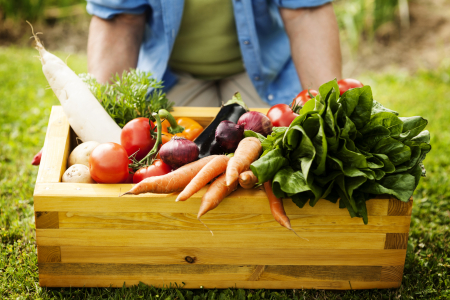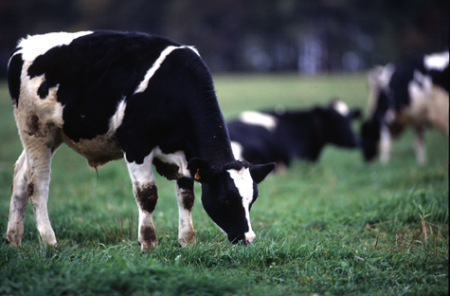Food resource balances and their use for the year 20231
The National Bureau of Statistics presents statistical data on food resource balances and their use for the year 2023:
Table 1. Food resource balances and their use for some basic agricultural products*, 2023, thousand tons
| Product names | Resources | Uses | Level of self-sufficiency, % | ||||||||||
| Production | Import | Stock variation | Total resources | Export | Seeds | Feed | Processing for non-food purposes | Losses | Personal consumption of the population | Total uses | |||
| 2023 | Informative, 2022 | ||||||||||||
| Cereal crops (excluding legumes) | 3177,1 | 103,2 | 207,6 | 3487,9 | 1817,8 | 95,6 | 1042,3 | 28,4 | 17,0 | 486,9 | 3487,9 | 190,2 | 95,8 |
| Potatoes | 172,4 | 70,2 | -14,7 | 227,9 | 0,9 | 40,1 | 2,8 | - | 3,5 | 180,7 | 227,9 | 75,9 | 68,9 |
| Vegetables | 285,0 | 66,1 | -13,8 | 337,2 | 34,3 | 5,4 | 3,6 | - | 8,2 | 285,8 | 337,2 | 94,1 | 81,0 |
| Fruits, berries, and nuts | 762,2 | 44,4 | -84,4 | 722,2 | 386,4 | x | 0,1 | 3,7 | 7,6 | 324,4 | 722,2 | 227,0 | 205,3 |
| Meat | 128,9 | 36,5 | -0,7 | 164,7 | 1,5 | x | - | - | 0,6 | 162,6 | 164,7 | 78,9 | 78,1 |
| Milk | 261,3 | 171,1 | 6,1 | 438,4 | 4,0 | x | 1,2 | - | - | 433,2 | 438,4 | 60,1 | 63,5 |
*Note: Food resource and use balances, broken down by product type, contain data on both fresh primary products and products derived from them, recalculated into primary products using conversion factors.
Total cereal crop resources (excluding legumes) in 2023 amounted to 3,487.9 thousand tons, or 136.5 thousand tons (+4%) more than in 2022. Cereal crop production in 2023 amounted to 3,177.1 thousand tons, or about 1.8 times more than in the previous year. Imports amounted to 103.2 thousand tons and decreased by 95.8 thousand tons (-48%) compared to 2022, while exports amounted to 1,817.8 thousand tons, which is 301.8 thousand tons (+20%) more than in the previous year.
Total potato resources in 2023 amounted to 227.9 thousand tons, which is 22.8 thousand tons (-9%) less than in 2022. Potato production amounted to 172.4 thousand tons, which is 0.6 thousand tons (+3%) more than in the previous year. Imports amounted to 70.2 thousand tons, 21.3 thousand tons (+44%) more than in 2022, and potato exports in 2023 amounted to 0.9 thousand tons, 0.5 thousand tons (-36%) less than in the previous year.
Total vegetable resources amounted to 337.2 thousand tons, which is 16.2 thousand tons (-5%) less than in 2022. In 2023, vegetable production amounted to 285.0 thousand tons, which is 28 thousand tons (+11%) more than in the previous year. Imports amounted to 66.1 thousand tons, down 2.2 thousand tons (-3%) compared to 2022, and vegetable exports in 2023 amounted to 34.3 thousand tons, down 1.8 thousand tons (-5%) compared to the previous year.
Total resources of fruits, berries, and nuts in 2023 amounted to 722.2 thousand tons, which is 20.9 thousand tons (-3%) less than in 2022. In 2023, the production of berries and nuts amounted to 762.2 thousand tons, which is 111.7 thousand tons (+17%) more than in the previous year. Imports amounted to 44.4 thousand tons, an increase of 5.4 thousand tons (+13%) compared to 2022, while exports amounted to 386.4 thousand tons, 39.8 thousand tons (-9%) less than in the previous year.
Total meat resources amounted to 164.7 thousand tons, which is 10.4 thousand tons (+7%) more than in 2022. In 2023, meat production amounted to 128.9 thousand tons, which is 9 thousand tons (+7%) more than in the previous year. Imports amounted to 36.5 thousand tons, down 7.1 thousand tons (-16%) compared to 2022, while meat exports in 2023 amounted to 1.5 thousand tons, up 0.3 thousand tons (+25%) compared to the previous year.
Total milk resources amounted to 438.4 thousand tons, which is 0.8 thousand tons (+0.2%) more than in 2022. In 2023, milk production amounted to 261.3 thousand tons, which is 9.2 thousand tons (-3%) less than in the previous year. Imports amounted to 171.1 thousand tons, down 0.9 thousand tons (-0.5%) compared to 2022, while milk exports amounted to 4 thousand tons, down 7.9 thousand tons (-66%) compared to the previous year.
Level of self-sufficiency with the main types of agricultural products calculated on the basis of food resource balances and their use characterizes the country's food security and reflects the extent to which domestic production covers all the country's needs or "domestic consumption." The level of self-sufficiency for some types of agricultural products for 2023 covered the country's domestic consumption, in particular: for fruits, berries, and nuts – 2.3 times, for cereal crops (excluding legumes) – 2 times. At the same time, for a number of products, the level of self-sufficiency did not cover the country's domestic needs and amounted to: vegetables – 94%, meat – 79%, potatoes – 76%, milk – 60%.
Consumption of food per inhabitant is calculated by dividing personal consumption by the average annual number of residents. The evolution of annual food consumption per inhabitant is shown in Figure 1.
Figure 1. Consumption of certain food products per capita per year, for the years 2019-2023

In 2023, compared to 2022, annual food consumption per inhabitant:
- increased to:
- fruit, berries, and nuts – from 122.1 kg to 130.1 kg (+7%);
- meat – from 60.8 kg to 65.2 kg (+7%);
- milk – from 168.4 kg to 173.8 kg (+3%).
- decreased to:
- vegetables – from 118.7 kg to 114.7 kg (-3%);
- potatoes – from 75.4 kg to 72.5 kg (-4%).
More detailed information on food resource balances and their use for 35 products is presented in the annex.
Annexes:
Notes:
1 The information is presented without data from the districts on the left bank of the Nistru River and the municipality of Bender.
Methodological clarifications:
Relevant information:
- Report a mistake. Select the desired text and press CTRL + ENTER



